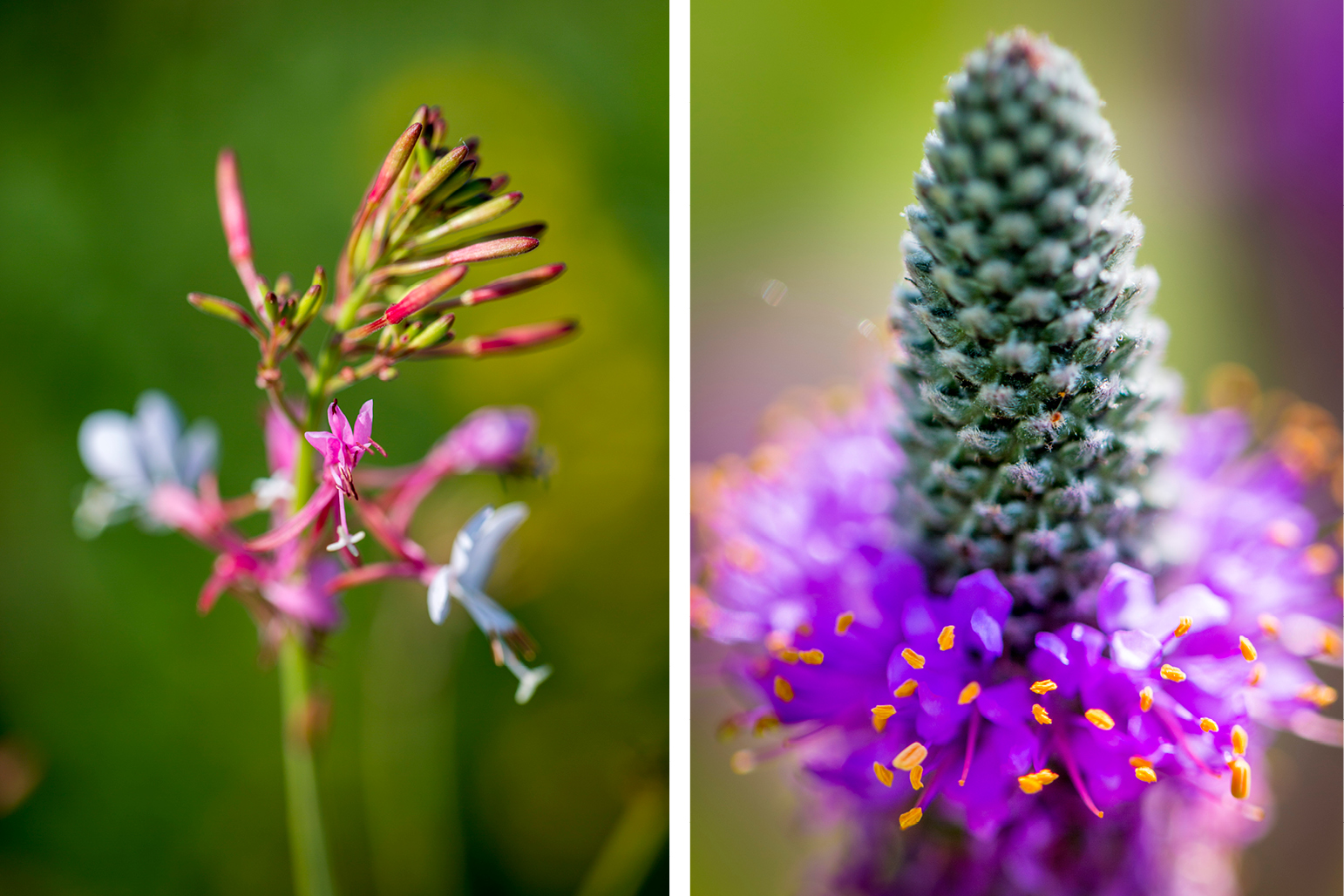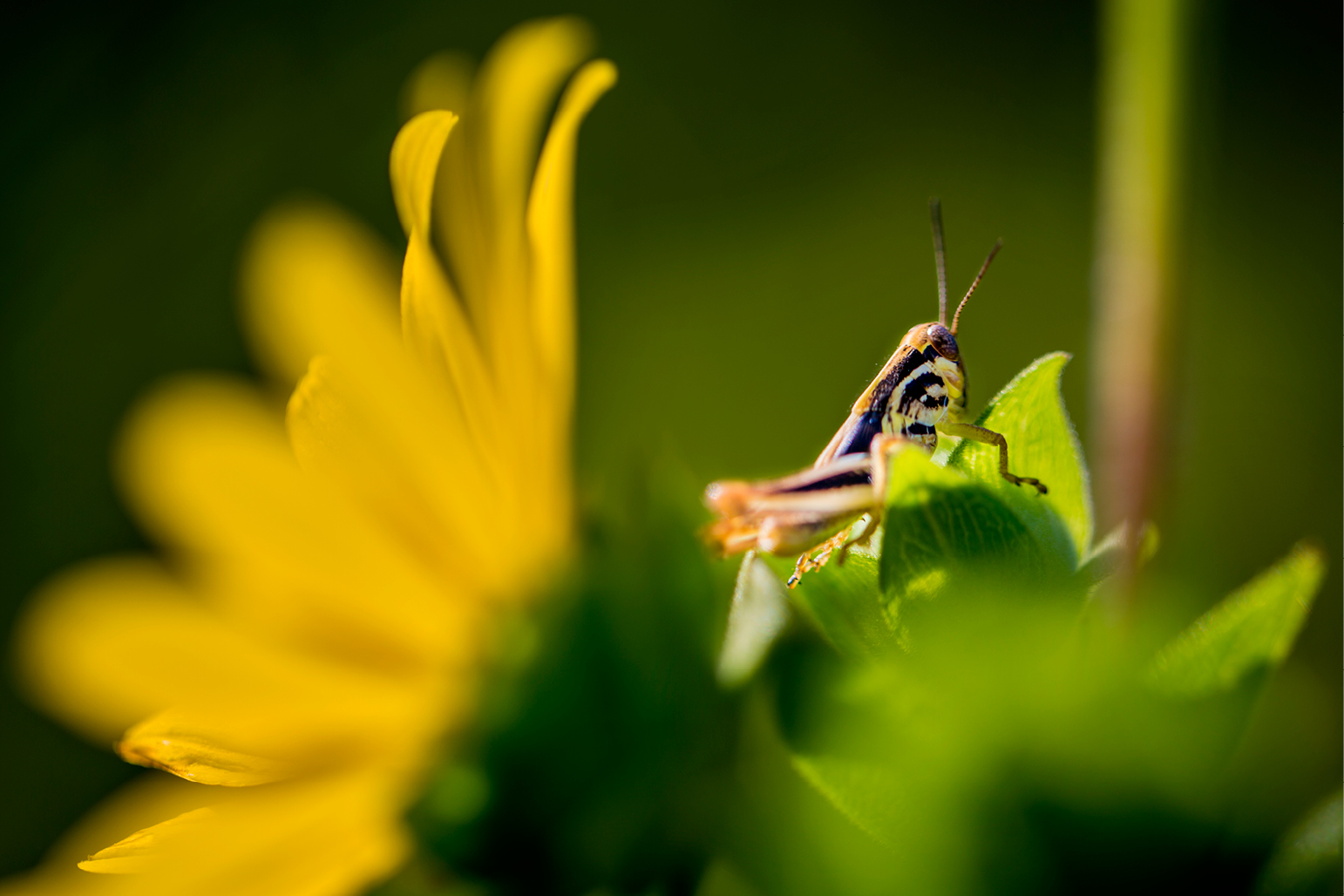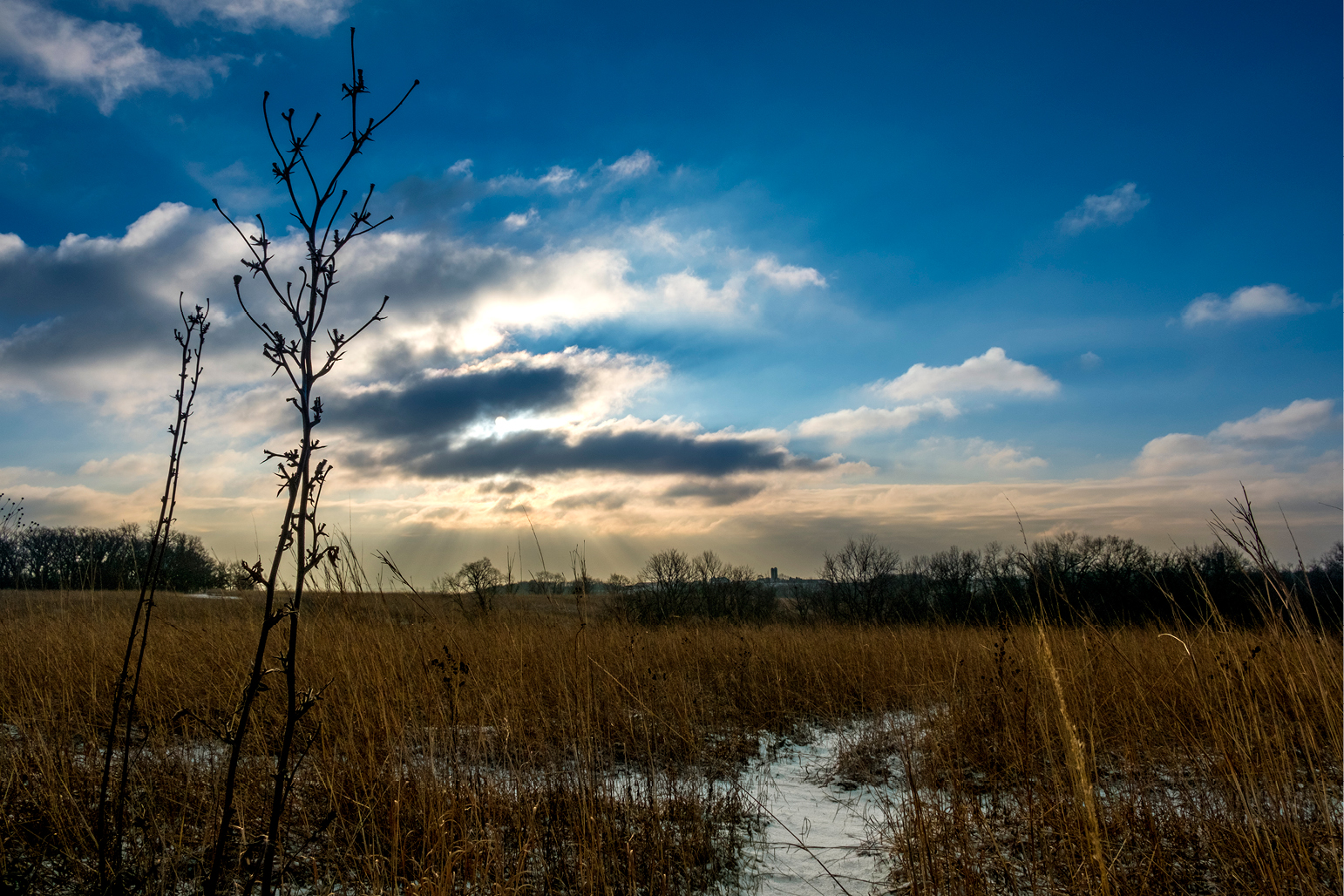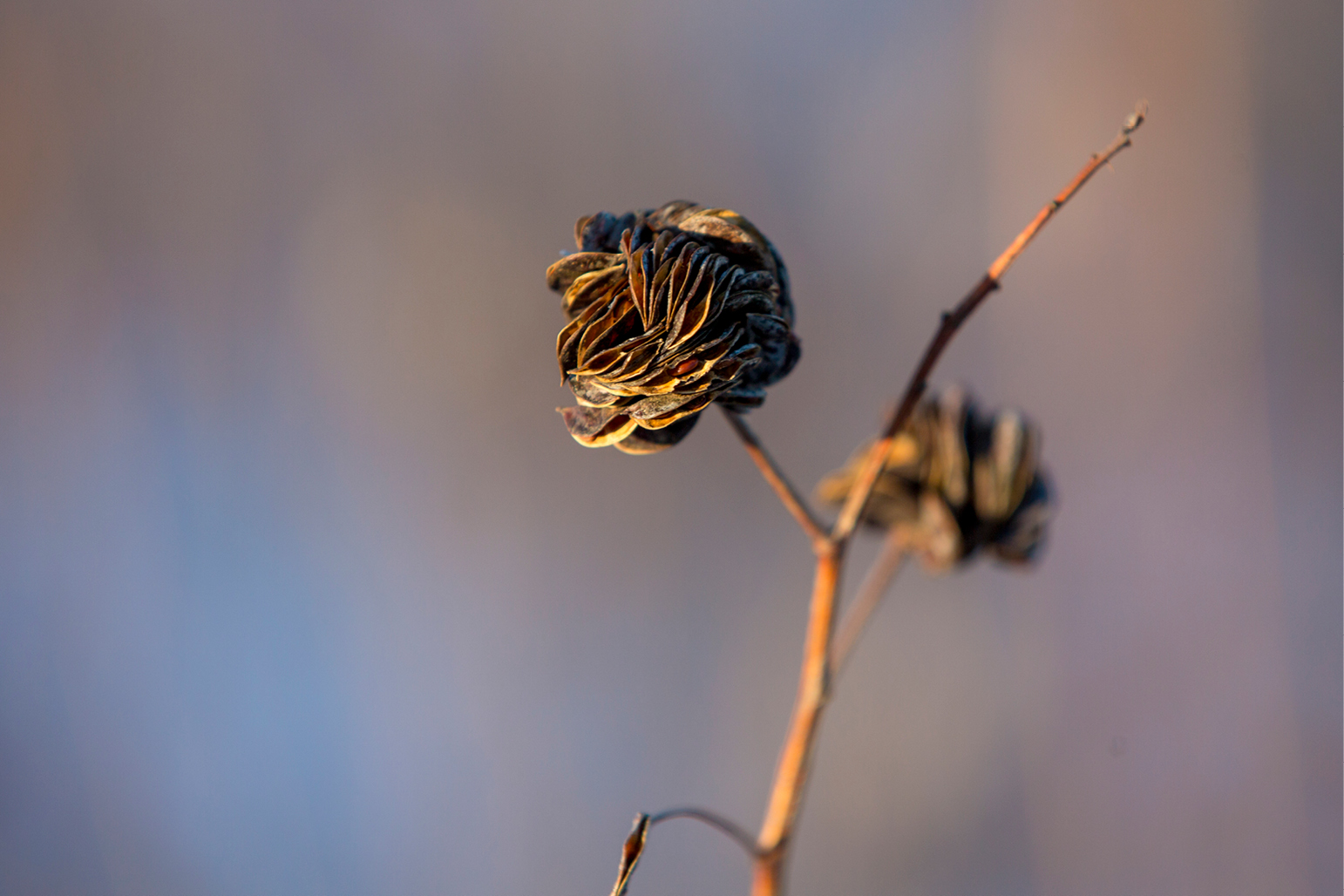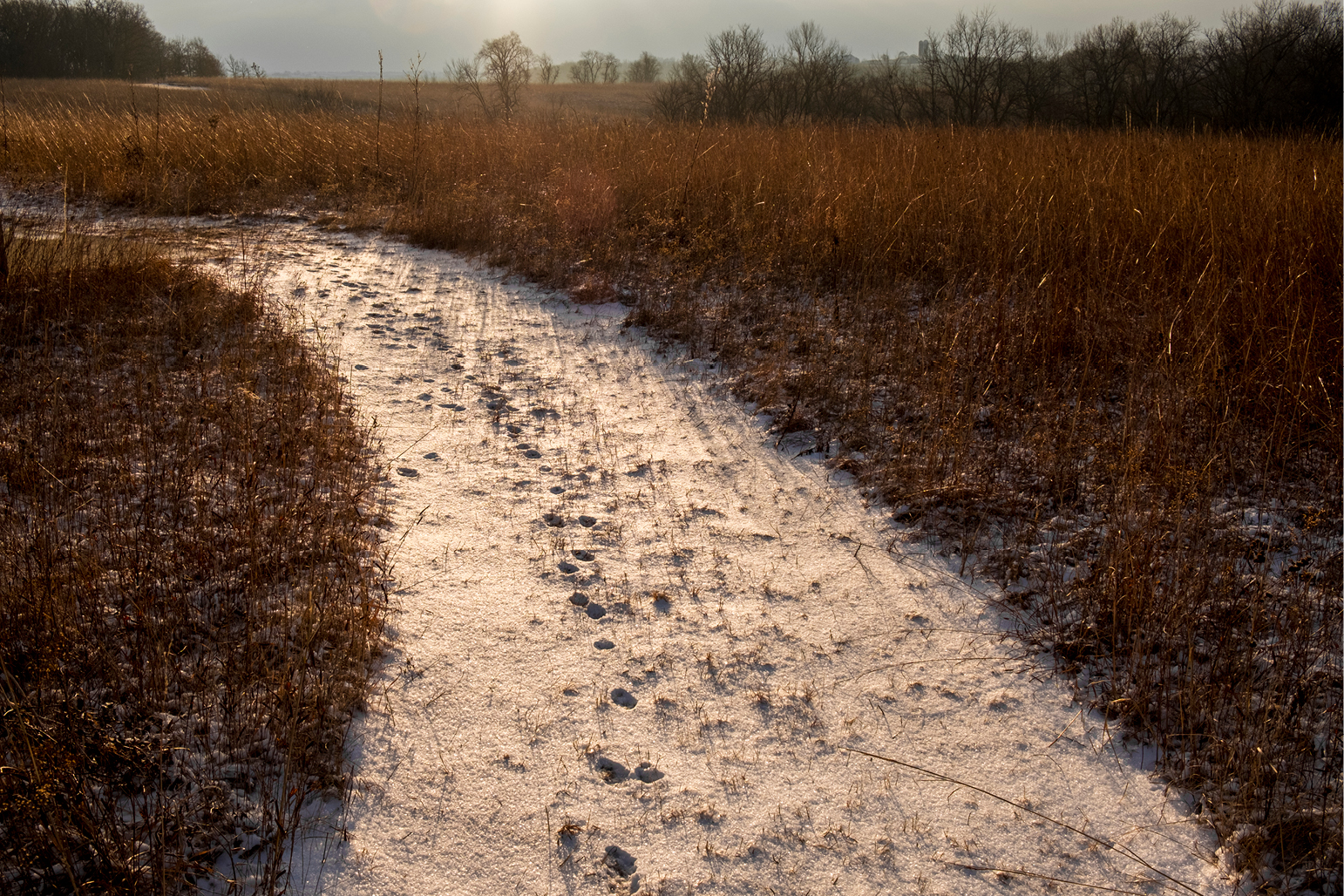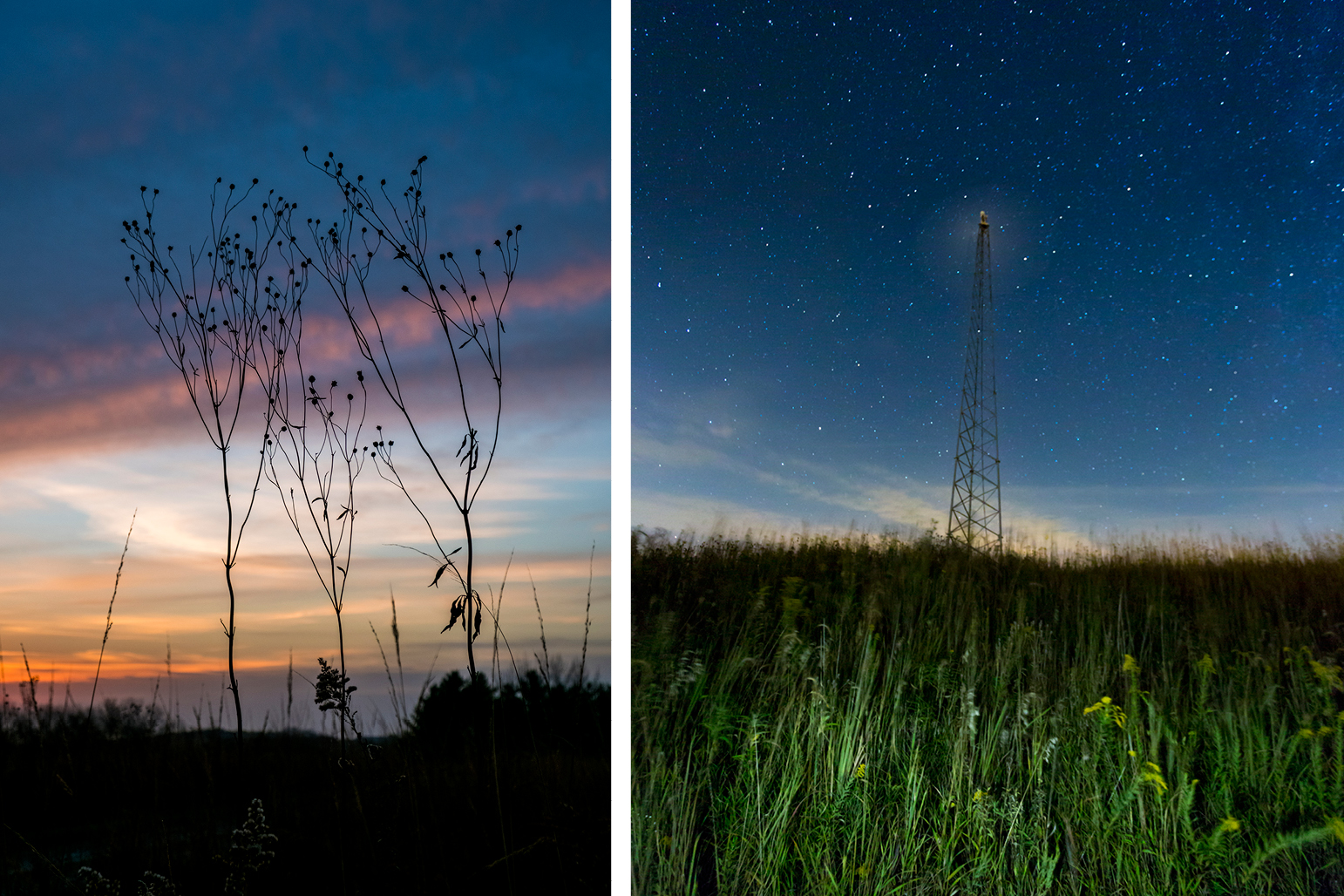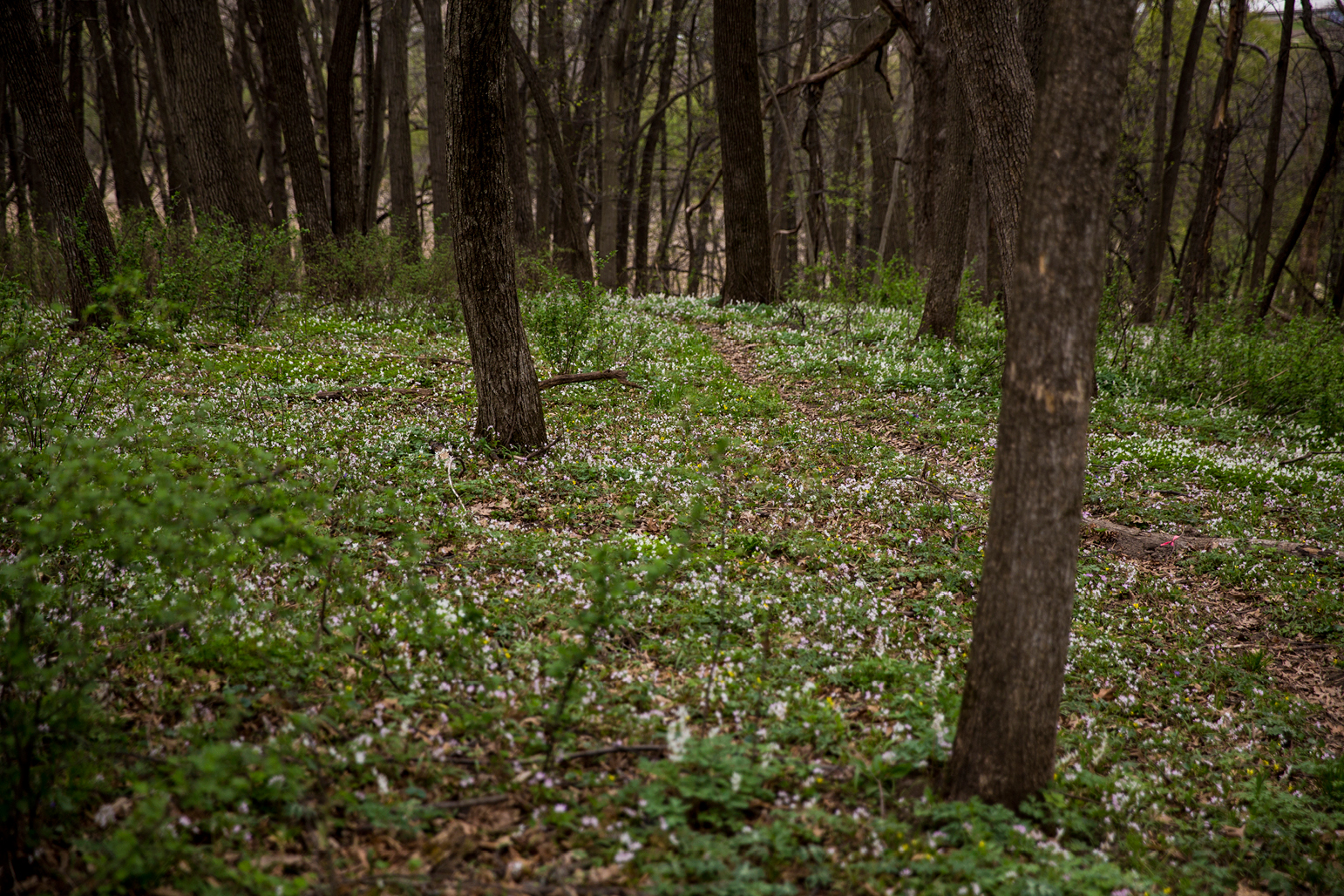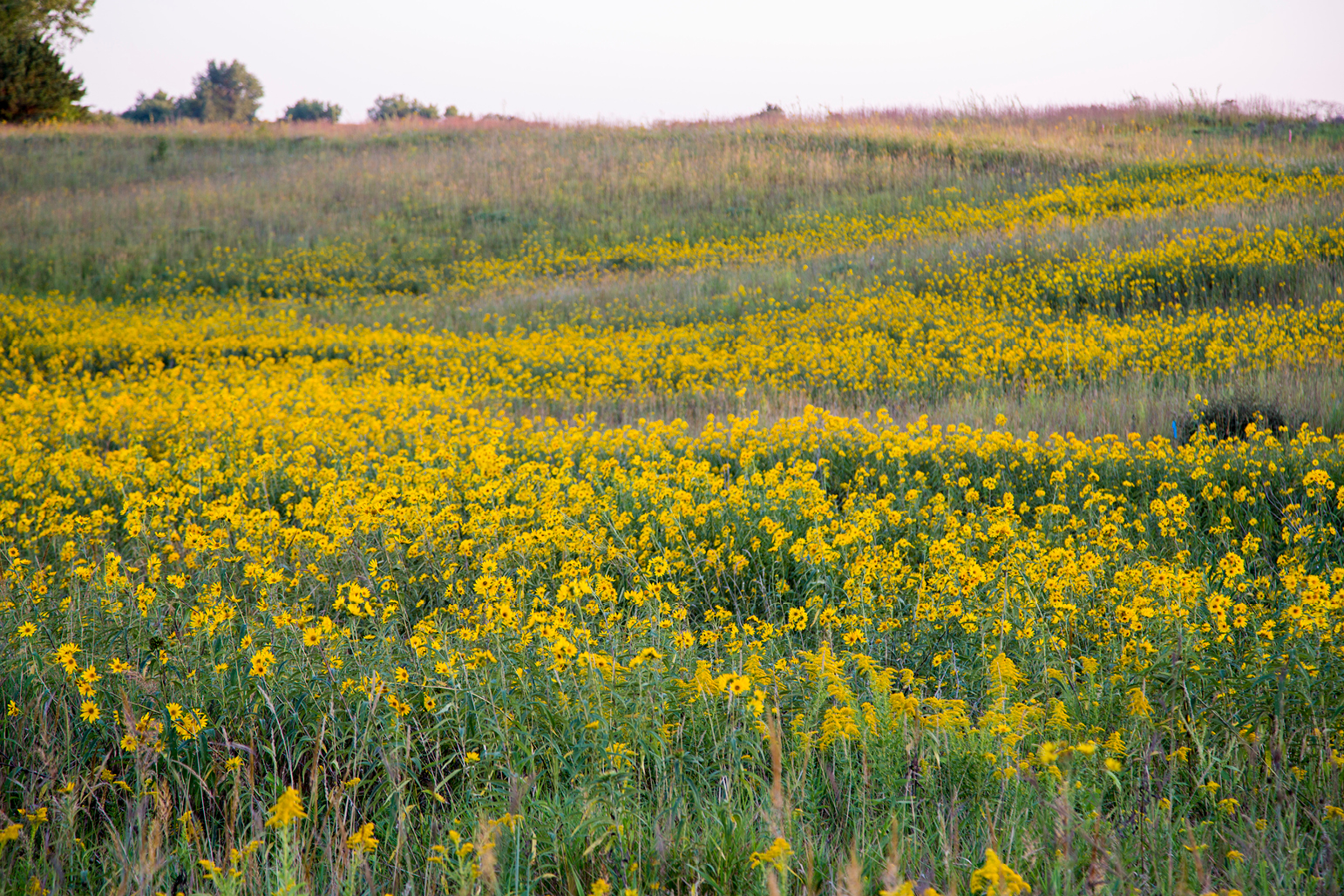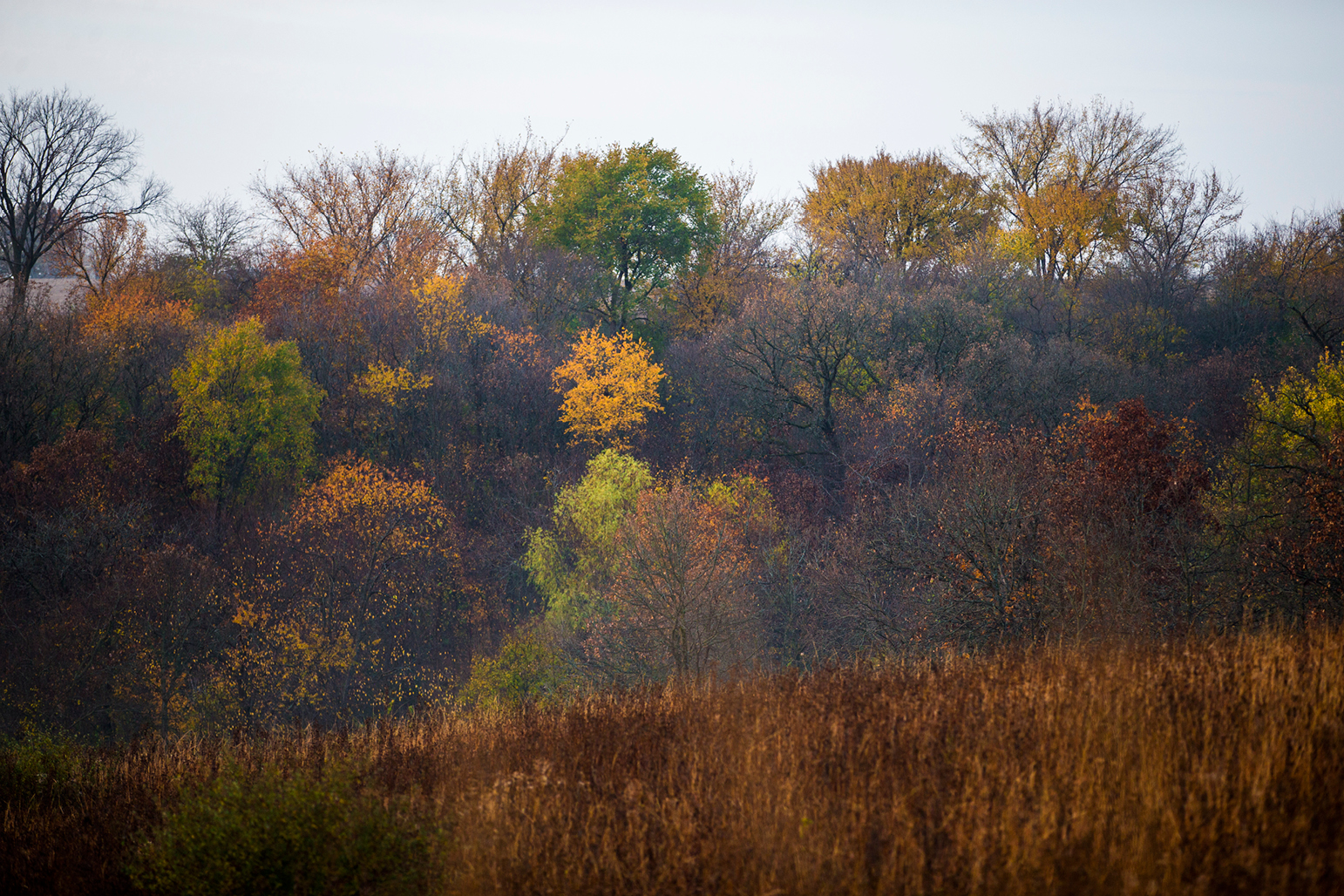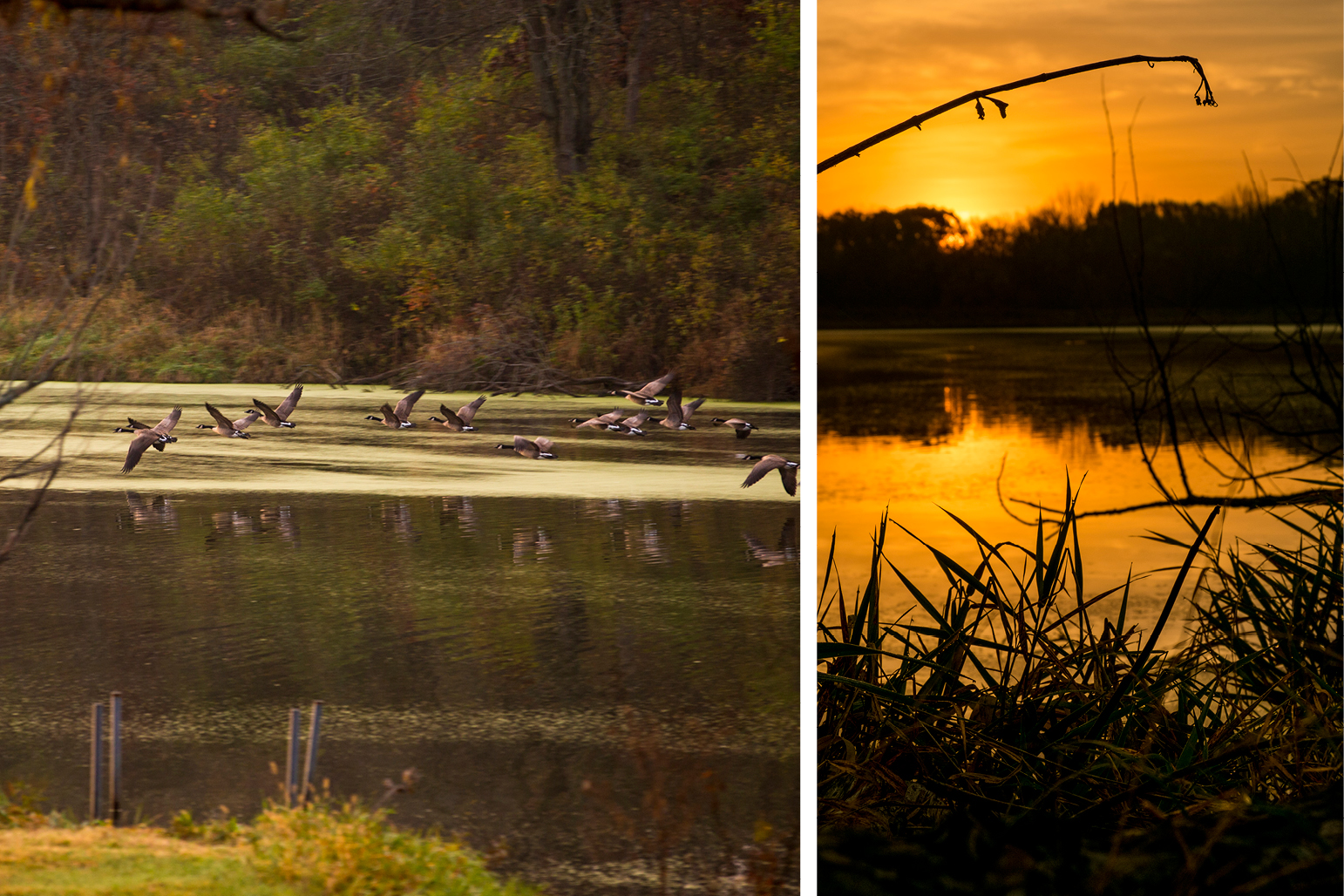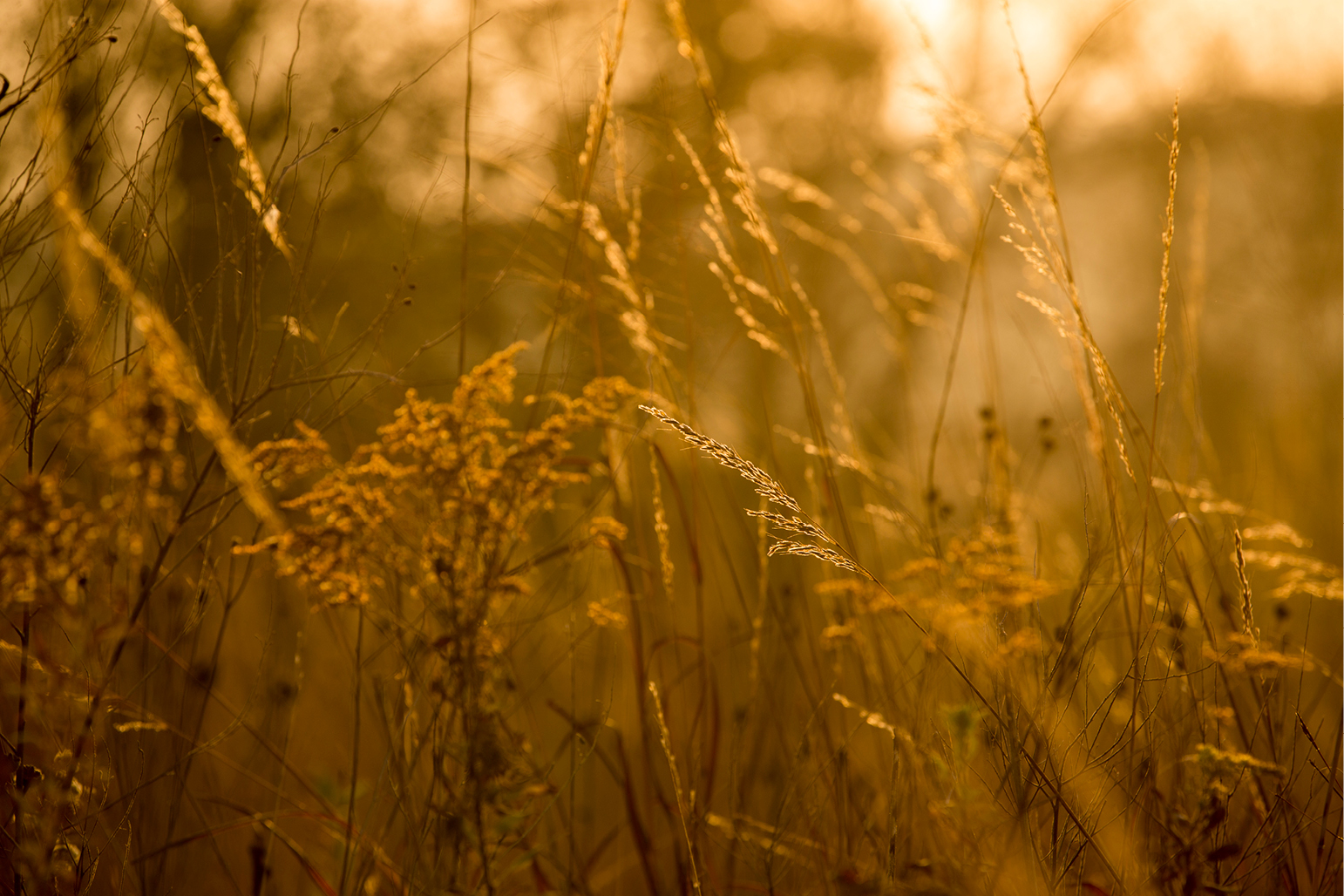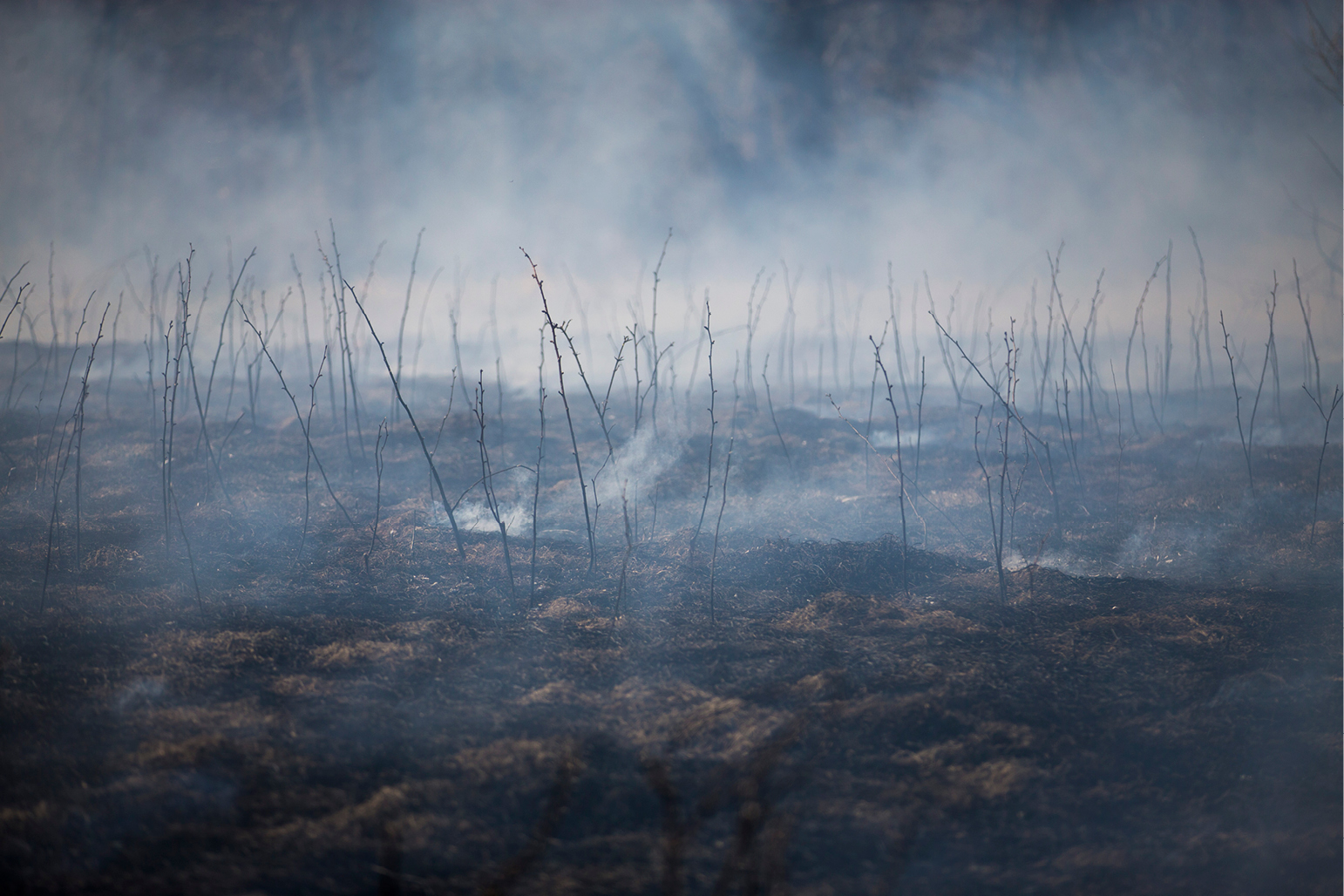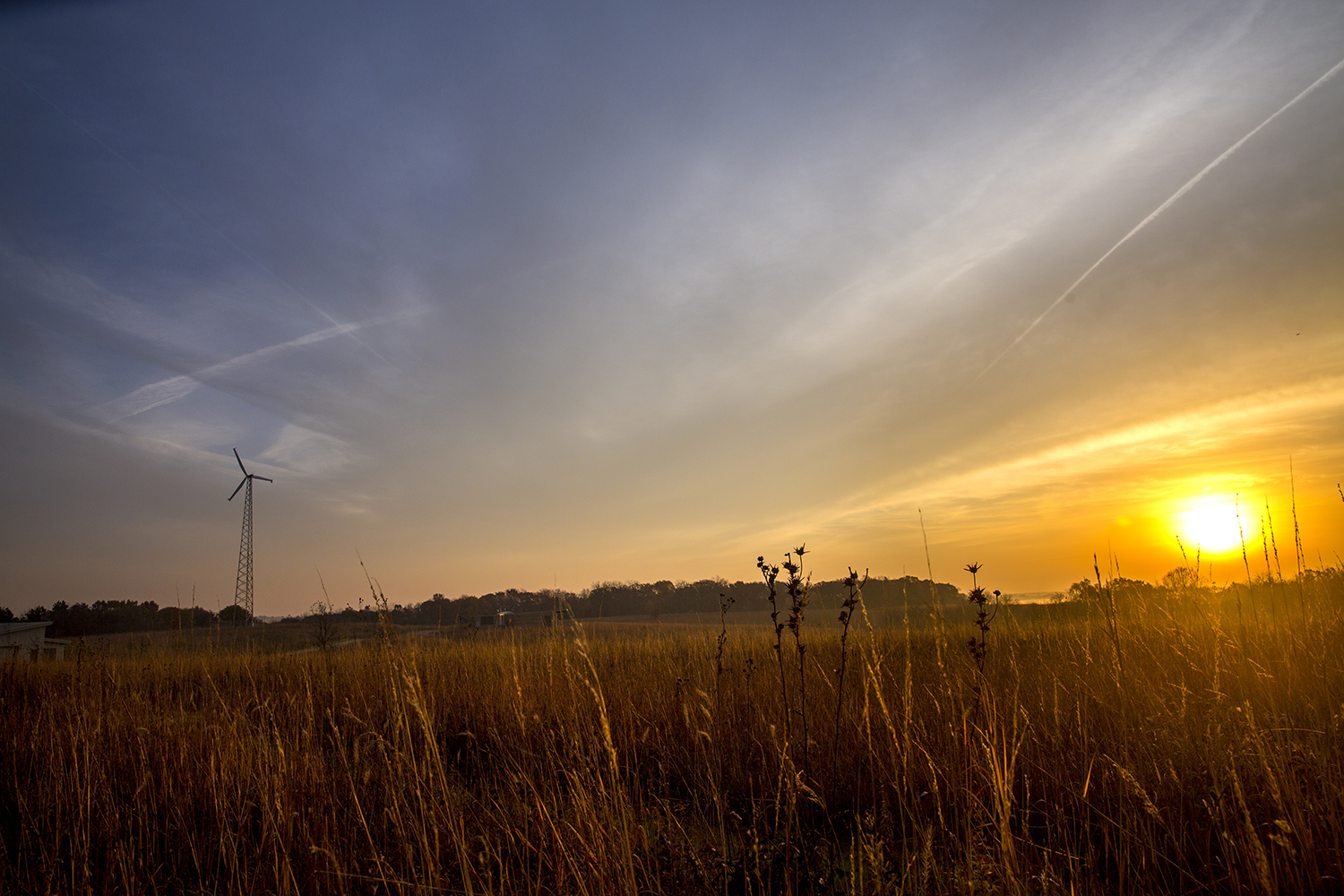Grinnell's Prairie
Drive down Interstate 80 to exit 173, head north for 100 yards, and take the first gravel road on your right. After about a mile and a half of rolling prairie, you’ll come across a sign with the College’s familiar red laurel leaf: Welcome to the Conard Environmental Research Area (CERA).
Though CERA is just 11 miles from the town of Grinnell, the College’s sprawling field station feels worlds away from the bustle of campus. Just beyond the low-slung, LEED-certified laboratory and a couple of small administrative buildings, 365 acres of prairie, savanna, wetlands, and oak forest beckon.
Grinnell College acquired CERA in 1968 and named it for the late Henry S. Conard, internationally recognized botanist and beloved Grinnell professor. In the 49 years since, students, faculty, and staff have worked to preserve, restore, and learn from its complex ecosystems.
Biologists, birdwatchers, artists, and ecologists alike value CERA for its beauty, vibrancy, and immersive learning opportunities. Through these photographs, we invite you to experience CERA in a year — without getting your car stuck in the mud, which may or may not have happened to the author.
